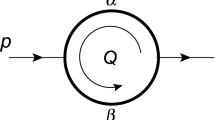Variable transformations for numerical integration have been used for improving the accuracy of the trapezoidal rule. Specifically, one first transforms the integral \({I[f]=\int^1_0f(x) dx}\) via a variable transformation \({x=\phi(t)}\) that maps [0,1] to itself, and then approximates the resulting transformed integral \({I[f]= \int^1_0 f\big(\phi(t)\big)\phi'(t) dt}\) by the trapezoidal rule. In this work, we propose a new class of symmetric and nonsymmetric variable transformations which we denote \({\mathcal{T}_{r,s}}\) , where r and s are positive scalars assigned by the user. A simple representative of this class is \({\phi(t)=(sin\frac{\pi}{2}t)^r/[(sin\frac{\pi}{2}t)^r+(\cos\frac{\pi}{2}t)^s]}\) . We show that, in case \({f\in C^\infty[0,1]}\) , or \({\in C^\infty(0,1)}\) but has algebraic (endpoint) singularities at x = 0 and/or x = 1, the trapezoidal rule on the transformed integral produces exceptionally high accuracies for special values of r and s. In particular, when \({f\in C^\infty[0,1]}\) and we employ \({\phi\in{\mathcal T}_{r,r}}\) , the error in the approximation is (i) O(h r) for arbitrary r and (ii) O(h 2r) if r is a positive odd integer at least 3, h being the integration step. We illustrate the use of these transformations and the accompanying theory with numerical examples.
Similar content being viewed by others
References
Abramowitz, M., and Stegun, I. A. (1964). Handbook of Mathematical Functions with Formulas, Graphs, and Mathematical Tables. Number 55 in Nat. Bur. Standards Appl. Math. Series. US Government Printing Office, Washington, DC.
Atkinson K.E. (1989). An Introduction to Numerical Analysis, second edition. Wiley, New York
Atkinson K.E. (2004). Quadrature of singular integrands over surfaces. Electr. Trans. Numer. Anal. 17, 133–150
Atkinson K.E., Sommariva A. (2005). Quadrature over the sphere. Electr. Trans. Numer. Anal. 20, 104–118
Davis P.J., Rabinowitz P. (1984). Methods of Numerical Integration, second edition. Academic Press, New York
Johnston P.R. (2000). Semi-sigmoidal transformations for evaluating weakly singular boundary element integrals. Int. J. Numer. Meth. Eng. 47, 1709–1730
Monegato G., Scuderi L. (1999). Numerical integration of functions with boundary singularities. J. Comp. Appl. Math. 112, 201–214
Robinson I., Hill M. (2002). Algorithm 816: r2d2lri: An algorithm for automatic two-dimensional cubature. ACM Trans. Math. Software 28, 75–100
Sidi, A. (1993). A new variable transformation for numerical integration. In Brass, H. and Hämmerlin, G. (eds.), Numerical Integration IV, number 112 in ISNM, Basel, Birkhäuser, pp. 359–373.
Sidi A. (2003) Practical Extrapolation Methods: Theory and Applications, Number 10 in Cambridge Monographs on Applied and Computational Mathematics. Cambridge University Press, Cambridge
Sidi A. (2004). Euler–Maclaurin expansions for integrals with endpoint singularities: a new perspective. Numer. Math. 98, 371–387
Sidi A. (2005). Analysis of Atkinson’s variable transformation for numerical integration over smooth surfaces in \(\mathbb{R}^{3}\) . Numer. Math. 100, 519–536
Sidi A. (2005). Application of class \(\mathcal{S}_{m}\) variable transformations to numerical integration over surfaces of spheres. J. Comp. Appl. Math. 184, 475–492
Sidi A. (2005). Numerical integration over smooth surfaces in \(\mathbb{R}^{3}\) via class \(\mathcal{S}_{m}\) variable transformations. Part I: Smooth integrands. Appl. Math. Comp. 171, 646–674
Sidi A. (2006). Extension of a class of periodizing variable transformations for numerical integration. Math. Comp. 75, 327–343
Sidi, A. (2006). Further extension of a class of periodizing variable transformations for numerical integration. Preprint. Computer Science Dept., Technion – Israel Institute of Technology.
Sidi A. (2006). Numerical integration over smooth surfaces in \(\mathbb{R}^{3}\) via class \(\mathcal{S}_{m}\) variable transformations. Part II: Singular integrands. Appl. Math. Comp. 181, 291–309
Sloan I.H., Joe S. (1994). Lattice Methods in Multiple Integration. Clarendon Press, Oxford
Stoer J., Bulirsch R. (2002). Introduction to Numerical Analysis, 3rd edn. Springer-Verlag, New York
Verlinden P., Potts D.M., Lyness J.N. (1997). Error expansions for multidimensional trapezoidal rules with Sidi transformations. Numer. Algorithms 16, 321–347
Author information
Authors and Affiliations
Corresponding author
Rights and permissions
About this article
Cite this article
Sidi, A. A Novel Class of Symmetric and Nonsymmetric Periodizing Variable Transformations for Numerical Integration. J Sci Comput 31, 391–417 (2007). https://doi.org/10.1007/s10915-006-9110-z
Received:
Accepted:
Published:
Issue Date:
DOI: https://doi.org/10.1007/s10915-006-9110-z
Keywords
- Numerical integration
- variable transformations
- sinm-transformation
- Euler–Maclaurin expansions
- asymptotic expansions
- trapezoidal rule




